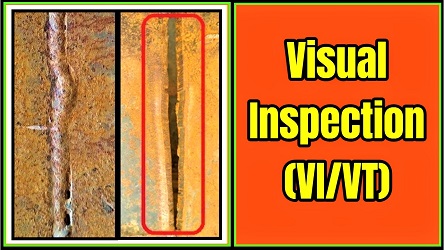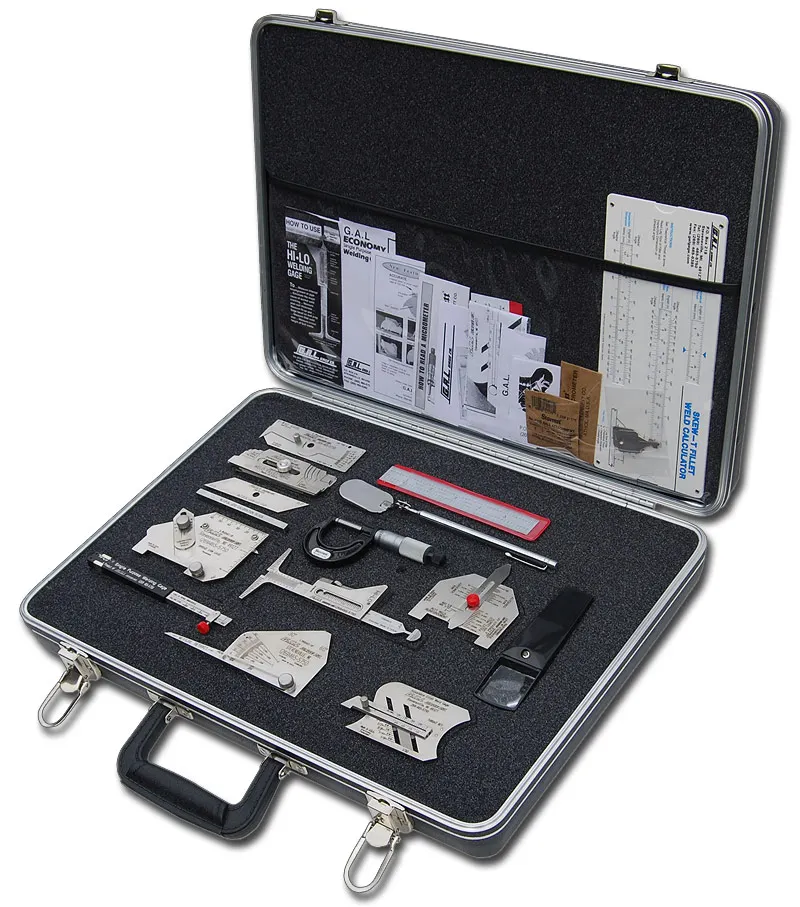Recognizing the Specifications for Welding Inspection Gilbert Arizona: A Complete Overview
Recognizing the Specifications for Welding Inspection Gilbert Arizona: A Complete Overview
Blog Article
Welding Assessment Demystified: Key Processes, Tools, and the Essential Duty They Play in Keeping High-Quality Welds
Welding evaluation serves as a vital backbone in the assurance of structural honesty and top quality in bonded joints, impacting different industries from construction to manufacturing. What are the vital processes and devices that guarantee these criteria are promoted?
Relevance of Welding Inspection
Making sure the stability of bonded joints is extremely important in numerous markets, making the value of welding evaluation obvious. The high quality of welds straight impacts the safety and security, performance, and durability of frameworks and parts. In industries such as building and construction, auto, aerospace, and production, any type of failure in bonded joints can result in devastating consequences, consisting of structural failings, equipment breakdown, and loss of life.
Welding assessment offers as a critical quality assurance measure, guaranteeing that welds meet specified criteria and regulative demands. It identifies defects such as fractures, porosity, and insufficient blend that might compromise the strength of the weld. By discovering these issues early, welding examination can avoid costly rework, hold-ups, and prospective safety and security risks.
Furthermore, welding inspection cultivates compliance with sector standards and certifications, boosting the credibility of organizations and their items. It also sustains continuous improvement by supplying useful responses to welding workers, allowing them to improve their strategies and procedures.
Inevitably, the value of welding evaluation can not be overemphasized; it is essential for preserving premium welds, making sure safety, and protecting financial investments throughout numerous industries.

Key Evaluation Processes
Efficient welding examination counts on a collection of essential procedures created to examine the high quality and integrity of welds. These processes include both aesthetic and non-destructive screening (NDT) approaches, making sure that any kind of defects are determined before they compromise architectural stability.
The primary step in the examination process is a comprehensive visual examination, which allows examiners to examine welds for surface problems such as fractures, undercuts, and insufficient fusion. Adhering to visual checks, various NDT strategies might be employed, consisting of ultrasonic screening, magnetic particle screening, and radiographic testing. Each approach provides distinct advantages; for circumstances, ultrasonic testing can spot internal defects, while radiographic screening offers a long-term record of the weld's internal framework.
In addition, it is critical to validate conformity with relevant codes and standards, ensuring that the weld meets sector requirements. This consists of inspecting weld measurements and positioning, as inappropriate dimensions can lead to failures under tons.
Vital Tools for Examination
Frequently utilizing the right devices is crucial for accomplishing exact welding inspections. A comprehensive collection of examination tools aids guarantee that welds fulfill strict quality criteria and requirements.
One of the key devices is the visual evaluation gauge, which allows examiners to analyze surface problems, such as sanitation and surface coating, straight. Additionally, calipers and micrometers are necessary for determining weld measurements and ensuring they comply with called for resistances.
For more in-depth assessments, ultrasonic screening (UT) equipment is invaluable. This approach utilizes high-frequency acoustic waves to spot internal flaws and analyze product thickness. Similarly, magnetic fragment testing (MT) and color penetrant testing (PT) are critical for determining surface and near-surface flaws, offering instant visual indications of possible problems.
Welders ought to likewise be geared up with firmness testers, which assess the you can try these out mechanical residential properties of the weld steel and base materials, ensuring they meet given needs. Documenting findings with digital assessment devices enhances traceability and high quality control. By employing these crucial devices, assessors can maintain high-grade welds, inevitably contributing to the safety and dependability of bonded frameworks.
Usual Flaws and Their Discovery
Welds, similar to the foundation of architectural integrity in building and construction and manufacturing, can exhibit numerous issues that compromise their performance and safety and security. Typical issues include porosity, fractures, undercut, lack of combination, and slag incorporations (Welding Inspection Gilbert Arizona). Each of these imperfections can materialize as a result of incorrect welding strategies, bad product choice, or inadequate preparation

Discovery of these problems can be attained with different non-destructive testing approaches, consisting of aesthetic examination, ultrasonic testing, and radiographic screening. Each approach plays a vital function in determining these faults, ensuring that the stability of the weld is kept and minimizing the threat of failing in important applications.

Best Practices for Quality Control
Making sure the finest of welds is extremely important for architectural stability and safety and security, specifically in see this here markets where the repercussions of failing can be severe. To accomplish this, several ideal practices for quality guarantee have to be implemented throughout the welding process.
First, a robust welding treatment requirements (WPS) must be developed, describing the needed parameters for every welding operation. This guarantees uniformity and adherence to industry requirements. Second, extensive training and qualification of welders are crucial; competent employees are better furnished to create high-grade welds and recognize possible defects.
Regular examinations need to be integrated right into the welding procedure, using both visual and non-destructive testing (NDT) methods to discover flaws at an early stage. Routine calibration of assessment devices is vital to preserve precision. In addition, recording all welding activities, including inspections and rehabilitative actions, produces a traceable document that can be vital for top quality control.
Conclusion
To conclude, welding evaluation works as an essential mechanism for guaranteeing the integrity and dependability of welded joints across markets - Welding Inspection Gilbert Arizona. With the implementation of vital assessment procedures and the use of important tools, companies can properly recognize and address potential content problems. Adherence to best methods in quality control not only boosts safety and security but additionally guarantees compliance with sector criteria, ultimately adding to the durability and efficiency of components and structures
Welding evaluation offers as a crucial backbone in the assurance of structural integrity and high quality in welded joints, impacting different sectors from building and construction to manufacturing.Guaranteeing the stability of welded joints is critical in different markets, making the significance of welding inspection obvious.Welding inspection serves as a vital quality control measure, making certain that welds meet defined criteria and governing requirements. By employing these essential tools, examiners can preserve high-grade welds, inevitably contributing to the safety and integrity of welded frameworks.
In final thought, welding assessment serves as an important device for making sure the integrity and integrity of welded joints across industries.
Report this page